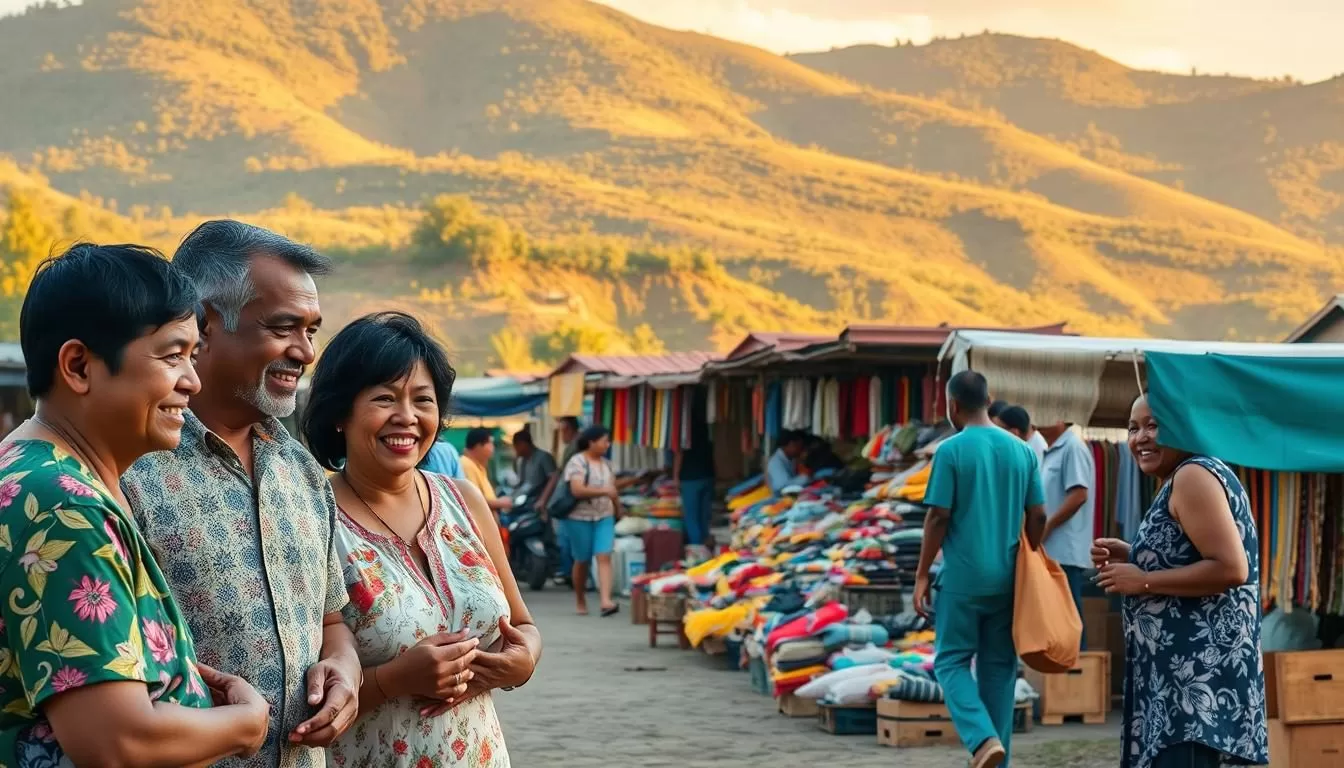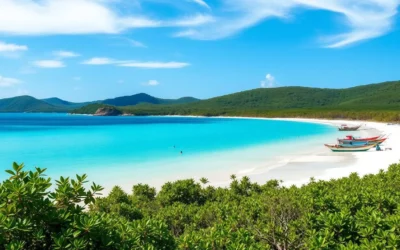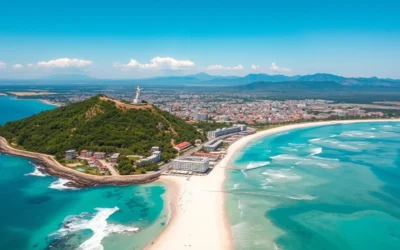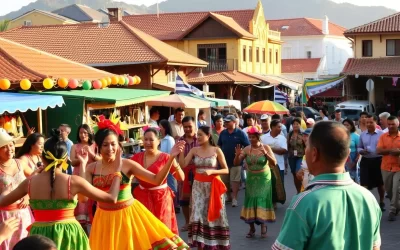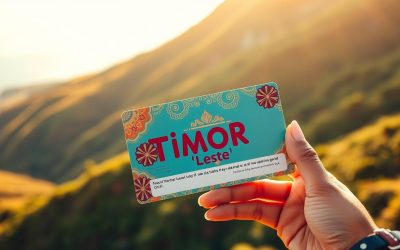✓ Accommodations✓ Flights✓ Rental Cars
Timor-Leste, a vibrant country in Southeast Asia, boasts a rich linguistic heritage. Its official language policy reflects its colonial past and cultural identity. Tetum, the most widely spoken language, serves as a unifying force for its people. Portuguese, another official language, connects the nation to its history. Together, these languages shape daily life and communication in East Timor.
Linguistic diversity in Timor-Leste goes beyond Tetum and Portuguese. Mambai, Tetum Terik, and other native languages add to the cultural mosaic. Research shows that even languages once thought extinct, like Makuva, still survive. This variety highlights the country’s multicultural roots and resilience.
Understanding the role of language in Timor-Leste offers insight into its identity. Tetum is the primary medium of instruction in schools, reflecting its importance. Meanwhile, Portuguese remains a symbol of the nation’s journey to independence. Together, these languages weave a story of unity and heritage.
Overview of Timor-Leste’s Linguistic Landscape
Nestled in Southeast Asia, this nation’s linguistic diversity reflects its rich cultural tapestry. Its unique geography, with mountains and coastal plains, creates distinct linguistic pockets. These features have shaped how people communicate across the area.
Geographical and Cultural Context
The mountainous terrain has isolated communities, allowing native dialects to thrive. For example, Mambai is spoken by around 273,000 people in the western regions. Coastal areas, like the southern coast, are home to Tetun Terik, with approximately 91,200 speakers.
Cultural influences from neighboring regions also play a role. The blend of Austronesian and Papuan roots has enriched the linguistic heritage. This mix is evident in languages like Makasae, spoken by about 155,700 people.
Demographic Insights
With a population of over 1.3 million, the country’s demographics influence language use. Tetun Dili, the most widely spoken dialect, has around 944,000 speakers. This growth reflects its role in daily life and education.
Local communities play a vital role in preserving traditional languages. Efforts to balance official dialects with native ones ensure cultural continuity. This approach highlights the nation’s journey to independence and identity.
Historical Evolution of Languages in Timor-Leste
Over time, the languages of this island have evolved through significant historical events. From colonial rule to foreign occupation, each era left its mark on the linguistic landscape. Today, the East Timorese people continue to honor their heritage while adapting to modern influences.

Portuguese Colonial Influence
Portuguese rule, which lasted for centuries, introduced new words and structures to local dialects. The colonial government promoted Portuguese as the language of administration and education. This influence is still evident today, with Portuguese remaining one of the official languages of the nation.
Despite this, family traditions helped preserve native dialects. Many communities passed down their linguistic heritage through oral storytelling and cultural practices. This resilience ensured that local languages survived alongside foreign influences.
Indonesian Occupation Effects
During the Indonesian occupation, the use of Portuguese was forbidden. Instead, Bahasa Indonesia became the dominant language in schools and government. This period saw a decline in the use of native dialects, as many East Timorese were forced to adapt to the new linguistic norms.
However, the island’s people found ways to keep their traditions alive. Underground movements and community gatherings became spaces where native languages thrived. This resistance played a key role in preserving the linguistic identity of the region.
| Period | Key Influence | Impact on Languages |
|---|---|---|
| Portuguese Rule | Introduction of Portuguese | Promoted as the language of administration and education |
| Indonesian Occupation | Ban on Portuguese, promotion of Bahasa Indonesia | Decline in native dialects, adaptation to Indonesian |
| Post-Independence | Recognition of Tetum and Portuguese | Revival of native languages, balanced linguistic policy |
The time of occupation was challenging, but it also strengthened the resolve of the East Timorese people. Today, their linguistic heritage stands as a testament to their resilience and cultural pride.
Timor-Leste: Official and widely spoken languages
The linguistic identity of this Southeast Asian nation is deeply rooted in its policies and modern trends. Both Tetum and Portuguese are recognized under the 2002 Constitution, reflecting their role in shaping national identity. This dual recognition highlights their importance in unifying diverse communities.
Policy Development and Recognition
Government policy has played a crucial part in promoting Tetum and Portuguese. Schools and educational institutions are key platforms for teaching these languages, ensuring they remain central to daily life. This approach helps preserve cultural heritage while fostering communication across different groups.
The 2010 census revealed that Tetum-Dili/Prasa is spoken by 36.6% of the population, making it the most widely used dialect. Portuguese, though less common, continues to influence administrative and educational systems. Together, these languages bridge the gap between tradition and modernity.
Modern Usage Trends
Modern communication trends have shaped how people use these languages. Tetum remains the primary medium for everyday interactions, while Portuguese is often reserved for formal settings. This balance ensures that both languages remain relevant in a rapidly changing world.
Educational initiatives have also contributed to this trend. Schools emphasize bilingual education, preparing students to navigate both local and global contexts. This dual focus strengthens the influence of Tetum and Portuguese in shaping the nation’s future.
As technology advances, these languages continue to adapt. Social media and digital platforms provide new spaces for their use, ensuring they remain vibrant and accessible to younger generations. This evolution underscores their enduring part in the country’s cultural and social fabric.
Official Language Policies and Educational Impact
Language policies in this Southeast Asian nation have shaped its educational landscape significantly. The interplay between Portuguese and Tetum has influenced teaching methods and curriculum design. These efforts aim to bridge the gap between tradition and modernity in education.
Curriculum and Language Instruction
Schools in this region emphasize bilingual education, using both Portuguese and Tetum. This approach prepares students for local and global contexts. However, challenges remain for speakers of indigenous languages, who often face barriers in accessing quality education.
Pilot projects like MTB-MLE have been introduced to address these issues. These initiatives focus on teaching in native dialects, ensuring cultural continuity. The results show significant improvements in student performance.
Impact on Literacy Rates
Literacy rates have seen a positive shift due to updated language policies. Adult literacy programs have also played a crucial role, especially for women and older learners. These efforts highlight the importance of inclusive education.
Data from recent studies reveal that literacy rates improved by over 50% in some areas. This progress underscores the effectiveness of structured language rules in education.
| Period | Literacy Rate | Key Policy Changes |
|---|---|---|
| Pre-2002 | Below 40% | Limited focus on native languages |
| Post-2002 | Above 60% | Introduction of bilingual education |
| Post-2012 | Above 70% | MTB-MLE pilot projects |
These advancements demonstrate the power of language policies in transforming education. By balancing Portuguese and Tetum, the nation ensures a brighter future for its people.
Exploring Indigenous Languages and Dialects
The linguistic tapestry of this Southeast Asian nation is woven with indigenous dialects and revival efforts. Across its regions, you’ll find a rich variety of native tongues that reflect its cultural diversity. These dialects have evolved over time, shaped by history and geography.
Regional Linguistic Variations
In the western regions, Mambai is spoken by around 273,000 people, while Tetun Terik thrives in the southern coastal areas. These dialects are deeply tied to their communities, serving as markers of identity. The mountainous terrain has played a key role in preserving these linguistic pockets.
Communities in the east often use Makasae, a language spoken by approximately 155,700 people. This diversity highlights the nation’s ability to maintain its linguistic heritage despite external influences.
Efforts in Language Revival
Recent initiatives aim to revive languages at risk of extinction. Government policy supports these efforts, ensuring native dialects are taught in schools alongside official languages. Community-led programs also play a vital role, encouraging younger generations to embrace their linguistic roots.
Projects like MTB-MLE focus on teaching in indigenous dialects, improving literacy rates and cultural continuity. These efforts are crucial for preserving the nation’s unique identity.
| Language | Region | Speakers |
|---|---|---|
| Mambai | Western | 273,000 |
| Tetun Terik | Southern Coast | 91,200 |
| Makasae | Eastern | 155,700 |
These initiatives demonstrate the nation’s commitment to its linguistic heritage. By balancing tradition and modernity, it ensures its dialects remain vibrant for future generations.
The Role of Tetum and Portuguese in Daily Life
In the heart of Southeast Asia, the interplay of Tetum and Portuguese shapes daily life. These languages are more than just tools for communication—they are symbols of identity and unity. Whether in formal settings or casual conversations, they play a vital role in connecting people across the nation.
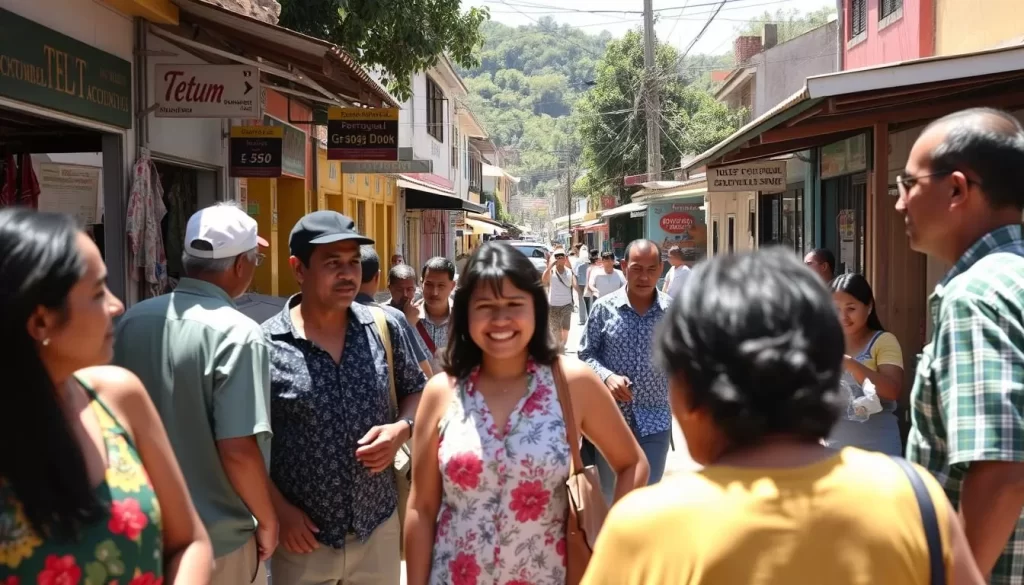
Everyday Communication
Tetum, the national language, is the backbone of daily interactions. It’s spoken by over 85% of the population, making it the most widely used dialect in the region. From marketplaces to family gatherings, Tetum bridges diverse communities, creating a shared sense of belonging.
Portuguese, though less common, holds a special place in formal contexts. It’s used in government, education, and media, reflecting its historical significance. Around 13.5% of the population speaks Portuguese, with fluency increasing among younger generations.
Together, these languages result in a rich linguistic tapestry. Tetum’s simplicity makes it accessible, while Portuguese adds a layer of sophistication. This balance ensures that both languages remain relevant in a rapidly changing world.
For example, in schools, students learn in both Tetum and Portuguese, preparing them for local and global opportunities. This dual approach strengthens the nation’s educational system and fosters cultural pride.
Understanding the role of these languages offers insight into the national identity. Tetum and Portuguese are not just means of communication—they are pillars of unity and heritage. To learn more about how these languages shape policy, visit this detailed analysis.
Language Diversity: A Blend of Austronesian and Papuan Roots
The rich linguistic heritage of this Southeast Asian nation is a testament to its Austronesian and Papuan roots. Over the years, these influences have shaped a unique cultural identity, blending traditions and modern practices. Language serves as a bridge, connecting communities and preserving their shared history.
Cultural Heritage and Identity
You’ll find that language diversity reflects the nation’s deep cultural roots. Austronesian and Papuan languages have coexisted for centuries, creating a vibrant linguistic tapestry. This blend is evident in dialects like Fataluku, spoken by 41,500 people in the Lautém district.
Historical events have played a significant role in shaping this heritage. From colonial influences to modern policies, each era has left its mark. Regional leaders have also contributed, promoting language as a service to unite diverse communities.
Located in Southeast Asia, the nation’s geography has further enriched its linguistic landscape. The mountainous terrain and coastal plains have allowed distinct dialects to thrive. This diversity is a source of pride, reflecting the resilience of its people.
| Language Family | Example | Speakers |
|---|---|---|
| Austronesian | Tetum | 944,000 |
| Papuan | Makasae | 100,000 |
| Timor-Alor-Pantar | Fataluku | 41,500 |
Understanding this linguistic diversity offers insight into the nation’s identity. For a deeper dive into its languages, explore this detailed analysis. It highlights how these dialects coexist, shaping the cultural and social fabric of the region.
The Impact of Global Influences on Language Use
Global influences have reshaped how people communicate in this Southeast Asian nation. The capital, Dili, serves as a melting pot for various language trends. Here, you’ll see how English and Indonesian have become significant alongside the Portuguese language and Tetum language.

English is viewed as a language of the future by many students, with proficiency often linked to improved quality of life. The Northern Territory Government of Australia even offers free English classes to attract people to study and work in the region. This has made English prevalent in public spaces, despite education policies focusing on Portuguese.
Indonesian, on the other hand, remains a working language recognized in the constitution. Its influence is evident in daily interactions, especially in the capital. The blend of these global languages with local dialects reflects the nation’s adaptability to modern communication trends.
Influence of English and Indonesian
English and Indonesian have become essential tools for economic and social mobility. Many university students find jobs before completing their studies due to their English skills. This trend highlights the practical benefits of learning global languages.
Indonesian, being a neighboring country’s language, plays a crucial role in trade and diplomacy. Its use in government and media further strengthens its position as a working language. Together, these languages bridge the gap between local traditions and global opportunities.
Adapting to Global Communication
Adapting to global communication trends presents both challenges and opportunities. The president and government have steered policies to balance traditional languages with global ones. For instance, Portuguese remains the official language for national exams, while English is increasingly used in higher education.
Educational initiatives emphasize bilingual education, preparing students for both local and global contexts. This approach ensures that the Portuguese language and Tetum language remain relevant while embracing new linguistic trends. For more insights into how these policies shape education, explore this detailed analysis.
As the nation continues to adapt, its linguistic landscape reflects a blend of tradition and modernity. This balance ensures that global influences enrich rather than overshadow its cultural heritage.
Timor-Leste Languages and Socioeconomic Development
Language proficiency in this Southeast Asian nation is a key driver of economic growth and social mobility. Economic data confirms that language plays a significant role in the job market, shaping opportunities for individuals and communities.
Language as an Economic Tool
Proficiency in official and working languages, such as Tetum and Portuguese, opens doors to better employment prospects. During the Indonesian occupation, the suppression of Portuguese impacted economic opportunities, leaving a lasting legacy. Today, fluency in these languages is often a prerequisite for jobs in government, education, and international organizations.
Historical periods like Indonesian rule have influenced the current linguistic landscape. The shift to Bahasa Indonesia during that era created challenges for those who relied on Portuguese or native dialects. However, the nation’s resilience has led to a revival of these languages, fostering economic growth.
- Language skills are linked to higher income levels and job stability.
- Fluency in Tetum and Portuguese is essential for roles in public administration.
- English proficiency is increasingly valued in sectors like tourism and trade.
Data shows that language use in various sectors directly impacts economic outcomes. For example, the coffee industry, a significant contributor to GDP, relies on multilingual communication for export and trade. This highlights the importance of language in driving economic activity.
Effective language use is critical for socioeconomic development. Policies promoting bilingual education and language training are essential for preparing the workforce. To learn more about how these efforts align with national goals, visit economic diversification and job creation.
As the nation continues to develop, language remains a cornerstone of its progress. By investing in language education and fostering multilingualism, Timor-Leste can unlock new opportunities for its people.
Preservation Efforts and Future Challenges for Timor-Leste Languages
Efforts to preserve linguistic heritage are gaining momentum, driven by a blend of cultural pride and modern innovation. Across the nation, communities are working tirelessly to combat the extinction of minority languages. These initiatives are not just about saving words—they’re about safeguarding identity and history.
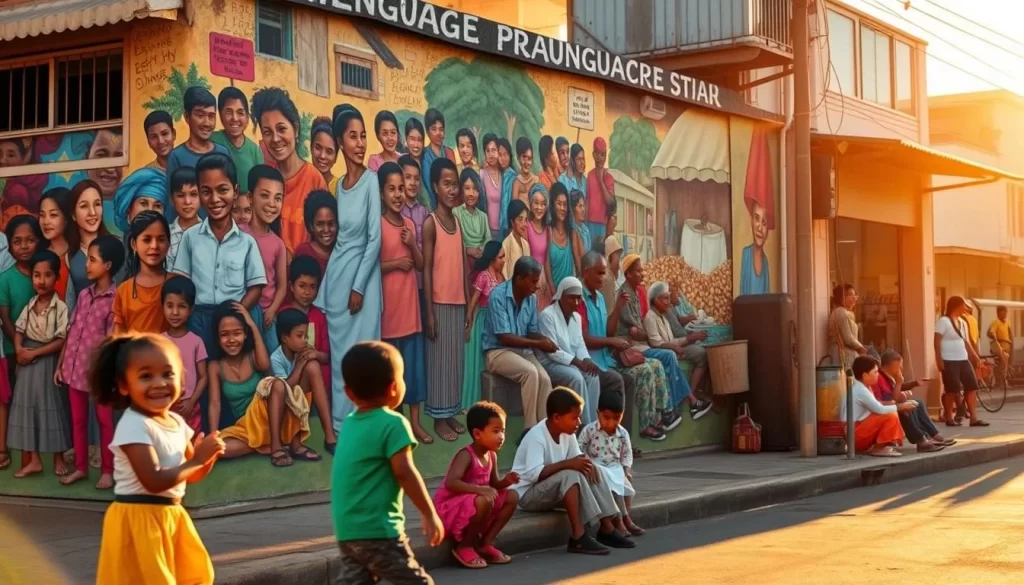
Combatting Language Extinction
Indigenous languages are fading at an alarming rate, with some dialects spoken by fewer than 1,000 people. To address this, local organizations are launching revival projects. These programs focus on teaching native languages in schools and documenting oral traditions. By doing so, they ensure that future generations can connect with their roots.
Government policies also play a crucial role. Recognizing the importance of linguistic diversity, officials are promoting bilingual education. This approach balances the use of official languages like Tetum and Portuguese with the preservation of native dialects.
Youth and Digital Media Initiatives
Young people are at the forefront of these preservation efforts. Through digital media, they’re finding creative ways to keep their languages alive. Social media platforms, podcasts, and apps are becoming tools for teaching and sharing linguistic heritage.
For example, one initiative uses TikTok to teach traditional songs in indigenous dialects. Another project has developed a mobile app for learning basic phrases in endangered languages. These efforts not only engage youth but also make language learning accessible to a wider audience.
Technology is also helping to document and archive languages. Digital libraries and online databases are preserving dialects that might otherwise be lost. This blend of culture and innovation is ensuring that linguistic diversity thrives in the digital age.
As the nation continues to develop, promoting working language skills remains essential. These efforts ensure that culture and communication continue to flourish.
Conclusion
The journey of language in this Southeast Asian nation reflects resilience and adaptation. From colonial influences to modern policies, each era has shaped its linguistic landscape. Today, the work of communities and leaders ensures that heritage remains alive while embracing global communication trends.
Historical challenges, like the resistance during foreign occupations, have strengthened the nation’s commitment to its identity. Modern initiatives balance tradition with innovation, making language a bridge between past and future.
As you explore this linguistic tapestry, you’ll see how working languages like Tetum and Portuguese unite diverse communities. Their role in education and daily life highlights their importance in shaping the nation’s identity.
To learn more about the cultural and linguistic diversity of this region, visit this detailed overview. It offers deeper insights into how language continues to shape its future.
The above is subject to change.
Check back often to TRAVEL.COM for the latest travel tips and deals.
